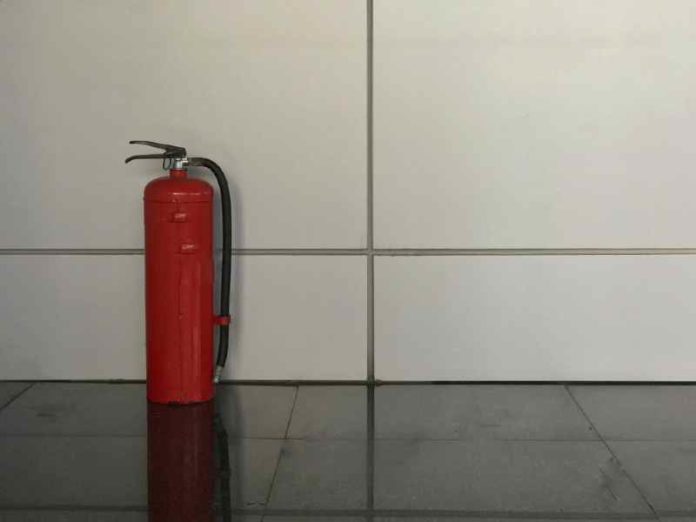With the prominence of 21st-Century threats like hackers, it can be easy to forget about dangers as primitive as a fire. Although the ability to control fires in the modern age is a drastic improvement from most of history, they still present a risk that demands serious attention.
In 2018, there were 499,000 structure fires in the United States, causing more than $11 billion in damages. Fires in the workplace can cause irreparable damage to your assets, or worse, can put the health and even lives of employees and customers at risk.
Your business should prepare for a worst-case scenario, but better than minimizing damage in a fire is making sure it never happens in the first place. By careful planning and practice, you can prevent workplace fires. Prevention takes work, but it’s worth the safety of your assets and employees.
Education
The first step in fire prevention is educating yourself and your employees about the causes and risks of fires. Negligence is to blame for a great many accidents. The cure for negligence is knowledge.
By understanding what behaviors are potentially hazardous, you can take steps to avoid them. You should not only look at the general risks associated with businesses but at what applies to your specific environment as well. Assess what things around or about your workplace pose a potential threat.
The kinds of equipment used by your business might put you at a higher risk than most. Your geographic location can factor in as well. For example, if you operate in a warmer, drier climate, fires will start and spread more quickly.
It’s essential to keep everyone up to date. Hold regular meetings where you go over these risks and reiterate safety policies.
Organization
After learning about potential hazards, you need to take action. While it may seem like a small factor, keeping your workspace organized is a central part of preventing fires as a business. Proper organizing can decrease the risk presented by flammable materials and create easy access to emergency routes.
You should place anything that generates heat away from combustible items such as wood and paper. Allow air to flow between and behind appliances to keep them from overheating. Ensure there is easy access to control panels and emergency exits.
Part of the organization process is getting ready for safety inspections, which you should consider assets rather than obligations. State requirements for fire safety give you a baseline for how you should operate to stay safe from fires. Inspections can also inform you if you need to revise your approach to fire prevention.
Planning
No matter how excellent your organization is, you must have a thorough emergency plan in place. In the event of a fire, you cannot leave the safety of yourself and others up to improvisation. A comprehensive and well-communicated evacuation plan is imperative.
Your plan should include accommodations for those with disabilities. Make sure it takes people who use a wheelchair, people with vision or hearing issues and so on into consideration. The plan should outline where to go, how to contact emergency services and the roles each staff member should take on.
On top of an evacuation plan, your planning should include training for employees. Things such as fire drills and demonstrations of how to properly use safety equipment will ensure that everyone will know how to act in an emergency, minimizing damage should an accident occur.
Maintenance
Fire preparedness is not a one-time endeavor. To maximize the efficacy of the preventative measures you take, you should regularly reassess them. Maintenance applies to everything involved in fire safety.
You should frequently check equipment that could potentially ignite. Once you organize your workspace, you should keep up that organization. Make sure you are periodically restating emergency plans and confirming their viability.
Remember to maintain safety equipment. It’s not enough to keep tools such as fire extinguishers in the building. You must make sure they are in working condition and within their shelf life. You should also pay attention to systems like smoke detectors and sprinklers. Even without use, this equipment can degrade over time, so their continued assessment is vital.
Safe Behavior
Even with up-to-date equipment and emergency plans, you and your employees always need to practice safe behavior. Many typical workplace behaviors are often negligent and can create unnecessary risk.
Using multiple extension cords for a single outlet increases the likelihood of an electrical issue, which can spark fires. Anyone who smokes should do so only in designated smoking areas. When dealing with flammable materials or hazardous equipment, employees should take care to use them only according to their instructions and intended uses.
Keeping doors closed when you’re not using them will help stop the spread of fire should one break out. Never prop open emergency doors.
Efficient emergency response and good insurance help reduce the damage of a fire, but the best defense is prevention. With proper preparation and the practice of informed, safe behaviors, you can minimize the risk of workplace fires.
Megan R. Nichols is a technical writer and the editor of Schooled By Science. She regularly contributes to sites like Industry Today, Born2Invest, and Business Process Incubator. Follow Megan on Twitter @nicholsrmegan and subscribe to her blog to stay in touch.
Fire prevention stock photo by Aimdeemeesuk/Shutterstock







